Human desire to consume meat and animal products runs deep in cultures globally, which is probably why some people who choose to be vegan still miss the experience of eating meat. In the past few years, designers have come up with numerous ideas for innovative alternatives to meat and eggs that not only mimic the taste and structure of the animal products but also seek to reduce food-related emissions as part of the global effort to slow climate change.
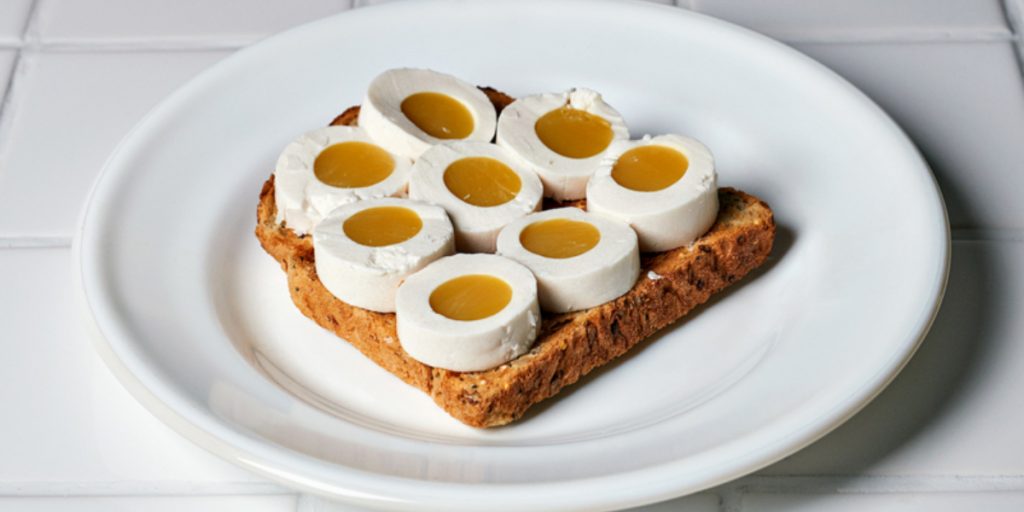
Developed by Central Saint Martins graduate Annie Larkins, the project playfully named An Egg Without a Chicken addresses issues of unethical and unsustainable industrial farming practices of chicken eggs with an unusually shaped plant-based alternative.
According to the designer, humankind needs to move away from intensive animal agriculture and explore alternative sources of protein. However, existing egg alternatives, both lant-based or grown synthetically in a laboratory, neglect the essence of what an egg is.
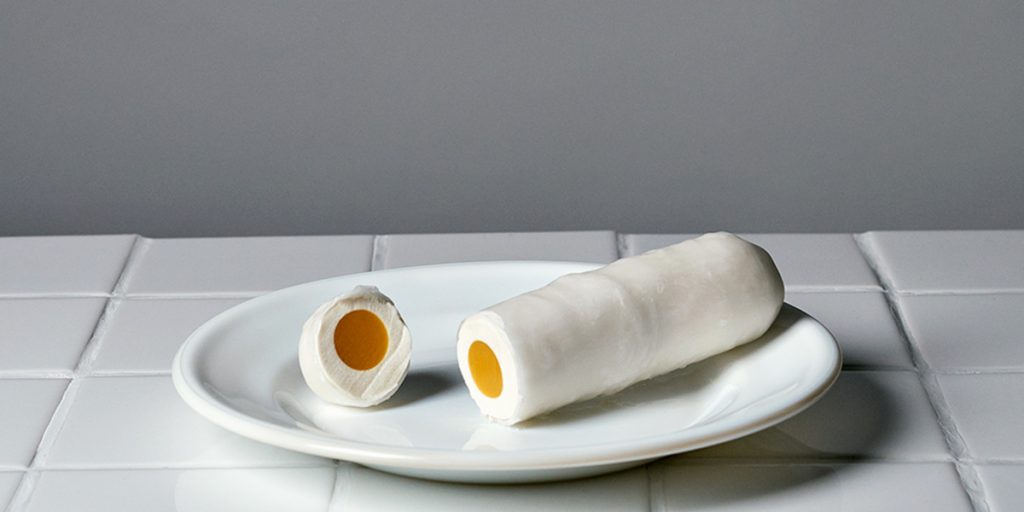
Plant-based eggs by Annie Larkins (also header image)
The key ingredient that is used to replicate the nutrients of a real egg is a pea protein isolate. Kala Namak salt, a kiln-fired rock salt used in South Asia, is utilized to reproduce the egg’s “sulphur-like” taste, while an alginate, an acid found in the cell walls of brown algae, helps create a yolk-like form that can burst like the real thing.
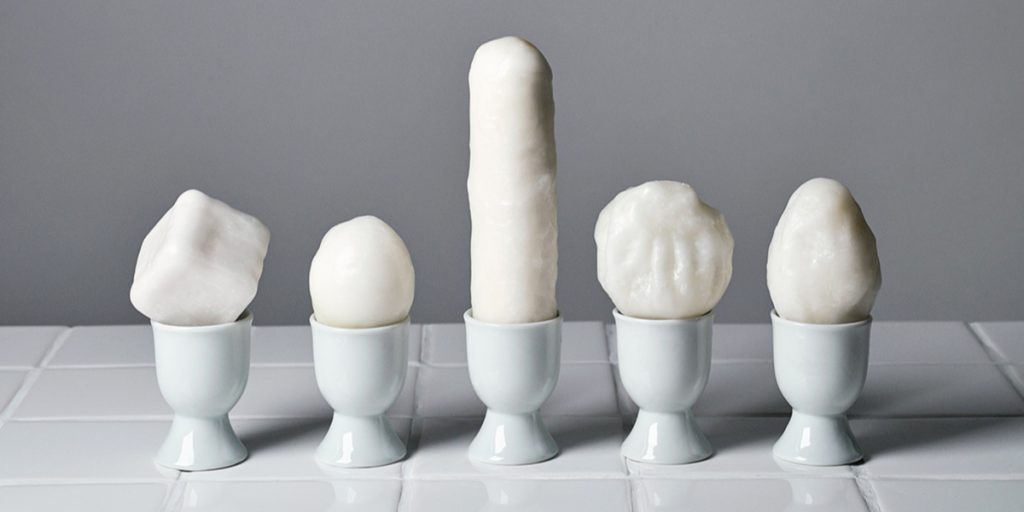
Plant-based eggs by Annie Larkins
To complete the “full egg experience”, which includes being able to crack it, Larkins created a shell-like exterior by either dipping the egg in melted plant-based wax, or by forming two halves of a shell and melting them together. Seeking ways to improve on the egg, she altered their shape, by elongating them or moulding them into cubes.
Larkins stresses that she is not trying to make a commercially viable egg product, but rather her recipe is a work-in-progress that proposes a solution to the problem of feeding an increasing population without putting a strain on the environment.
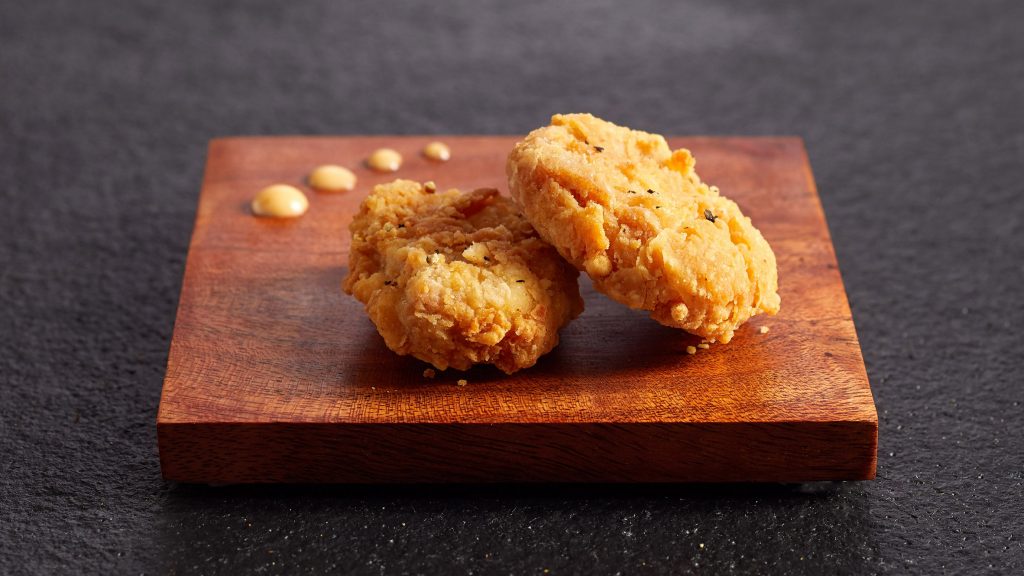
Lab-grown chicken meat by Eat Just
Larkins is not the first designer to experiment with alternatives to animal products. US startup Eat Just is known for its lab-grown meat substitutes. Also known as clean meat, this product does not consist of dead animals but of cells harvested from live animals, which are then grown into a meat product in a lab.

Lab-grown chicken meat by Eat Just
According to the company, tests found that the cultured chicken meat had an “extremely low and significantly cleaner” microbiological content than real chicken, which can contain bacteria transferred from the gut, skin and feet of the birds. An independent panel also assessed the meat’s nutritional value, deeming it high in protein and low in saturated fat, much like regular chicken.
Lab-grown chicken nuggets by Eat Just will soon be available in a restaurant in Singapore, which will make it the first lab-grown meat in the world to be to granted regulatory approval for sale.
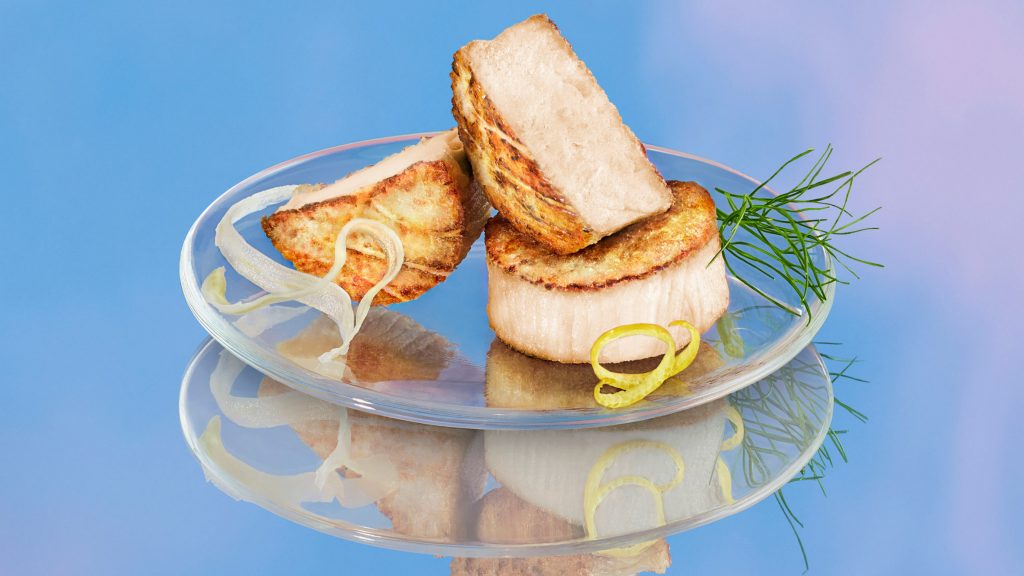
Air Meat by Ari Protein
Although cultivated meat is slaughter-free it is not plant-based, making it controversial among vegetarians and vegans. A recent survey by vegan dating app Veggly found that only 24 per cent of vegans would be open to eating it.
Another US-based startup Air Protein has developed a meat substitute called Air Meat from captured CO2 emissions from factories in a bid to mitigate the climate impact of agriculture. While beef generates 70 kilograms of greenhouse gas emissions for every kilogram produced, Air Protein founder Lisa Dyson claims that its protein production emits far less carbon, with no arable land required at all.

Air Meat by Ari Protein
Described by Air Protein as “the meat of tomorrow”, Air Meat was designed using research on converting carbon dioxide into food for space travel that was conducted by NASA in the 1960s and found that certain microbes could convert carbon dioxide released by astronauts into a protein when combined with water and energy.
The microbes are grown in bioreactors powered by solar and wind energy, hydrogen and oxygen and captured industrial emissions. The protein is then purified and dried, resulting in a “protein-packed flour” called Air Protein. Elements of the air are whisked together with cultures to produce protein – a process similar to the process to yoghurt, cheese or beer fermentation..
The resulting product replicates the flavour and texture of animal meat products such as beef steak. The original recipe can be tailored to resemble chicken, pork or seafood via experimenting with different oils and nutrients to alter taste and flavour. Besides, the substance has no soy, hormones, pesticides, herbicides or genetically modified organisms. Instead, it features more protein per kilogram than any other meat source and is rich in vitamins, minerals and amino acids, which results in additional health benefits in comparison to animal meat.

Broccopork, Mushchicken and Peaf by Leyu Li
To investigate how people will react to cultivated meat products in the future and to start a discussion about meat, lab meat, plant-based meat and plants, London-based food designer Leyu Li has conceptualized three imaginary cultivated meat products, Broccopork, Mushchicken and Peaf, with plants’ surface working as scaffolding, and meat tissue cells being grown along these structures, so customers can easily capture both the existence of meat and plants. She imagined meat being grown on the surface of specific vegetables including broccoli, mushrooms and peas.
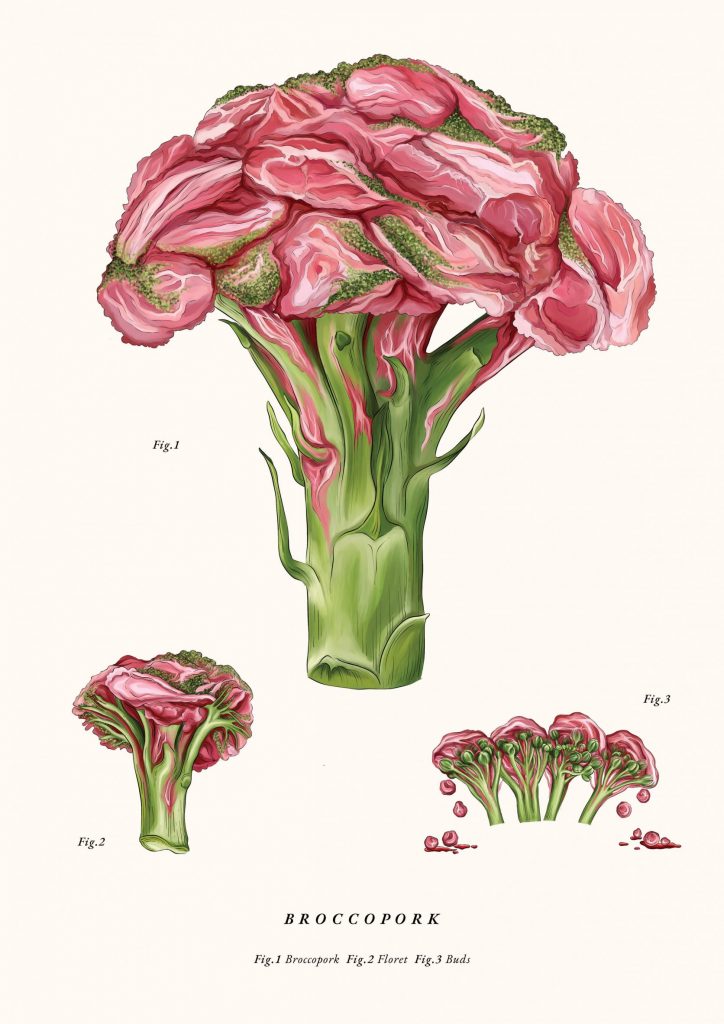
Broccopork by Leyu Li
Li consulted a cellular agriculture company to ensure the concept was plausible. Developed in consultation with cellular agriculture startup Hoxton Farms, the hybrid meaty plants is one potential category of cultivated meat products in the future, which is designed based on the plausibility of the current tissue engineering.
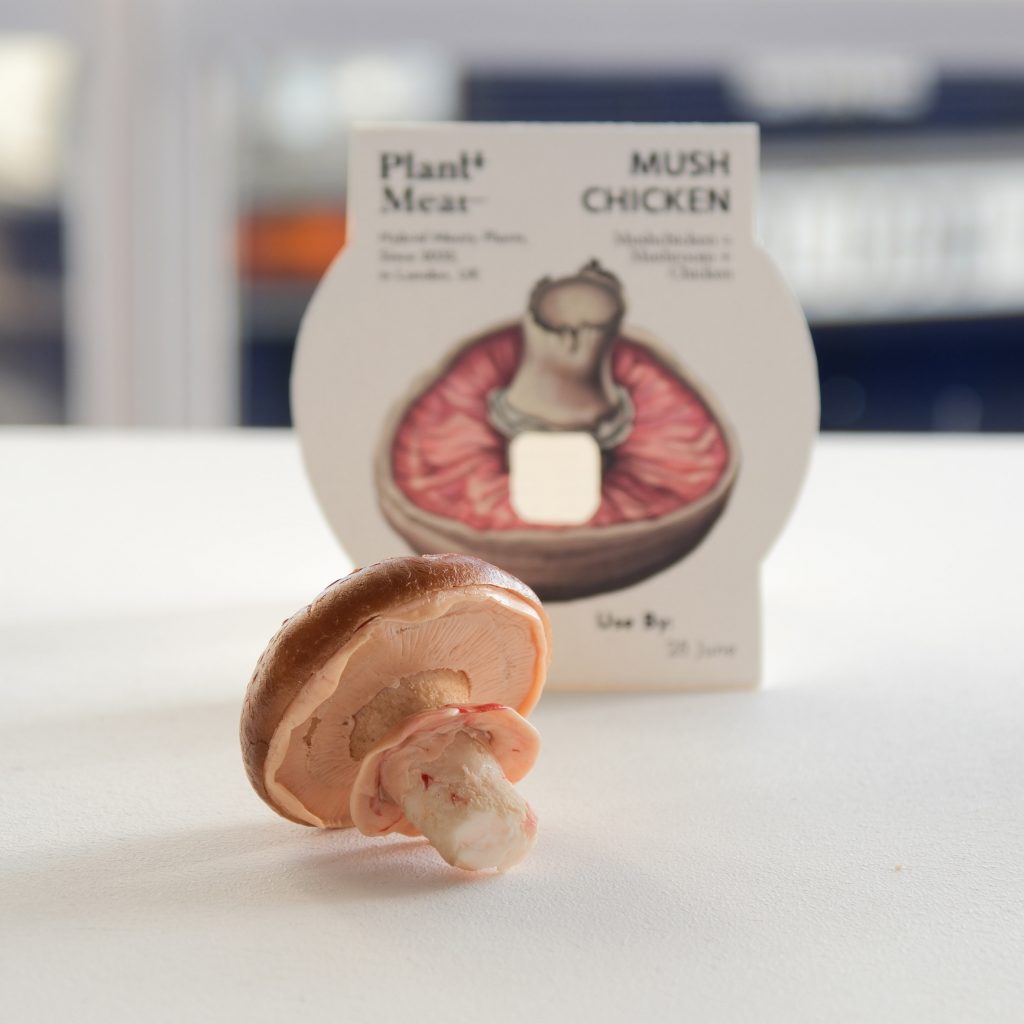
Mushchicken by Leyu Li

Peaf by Leyu Li
The designer also made up a fictional biotech company called “Plant+ Meat-” and developed its brand identity, including delivery boxes, and posted a series of TikTok videos from the pseudonym account Meaty Aunties, promoting the products to an audience who don’t know whether they are real or not. So far, her videos have garnered more than three million views and thousands of comments.